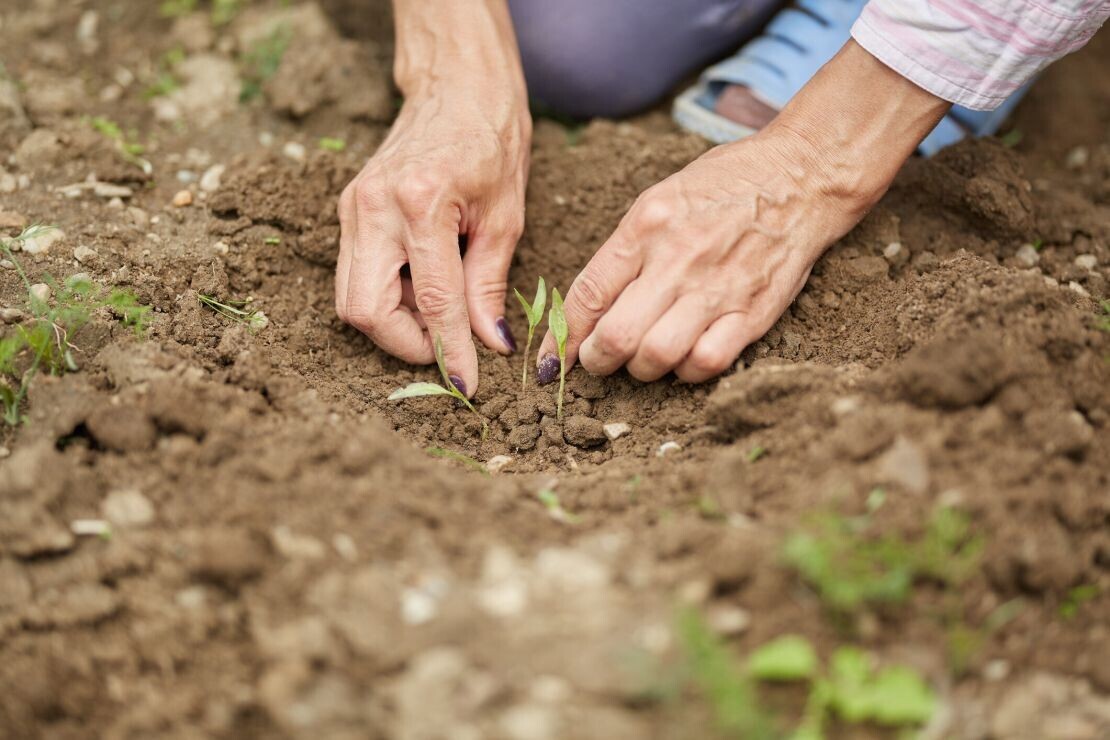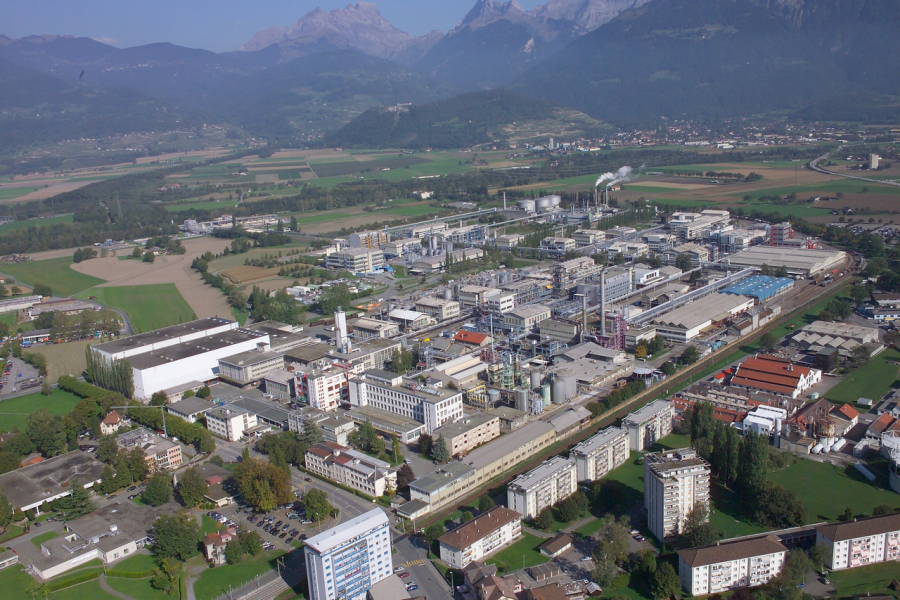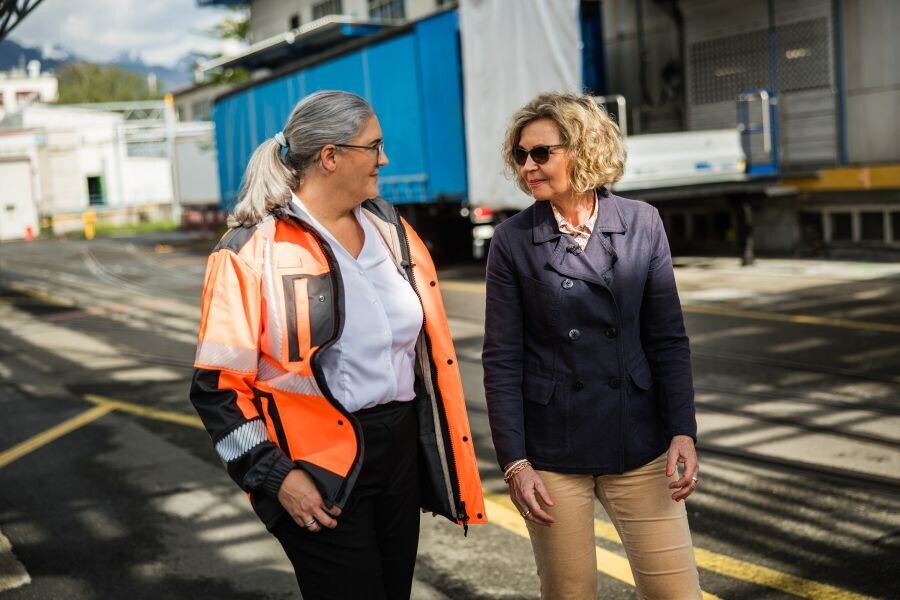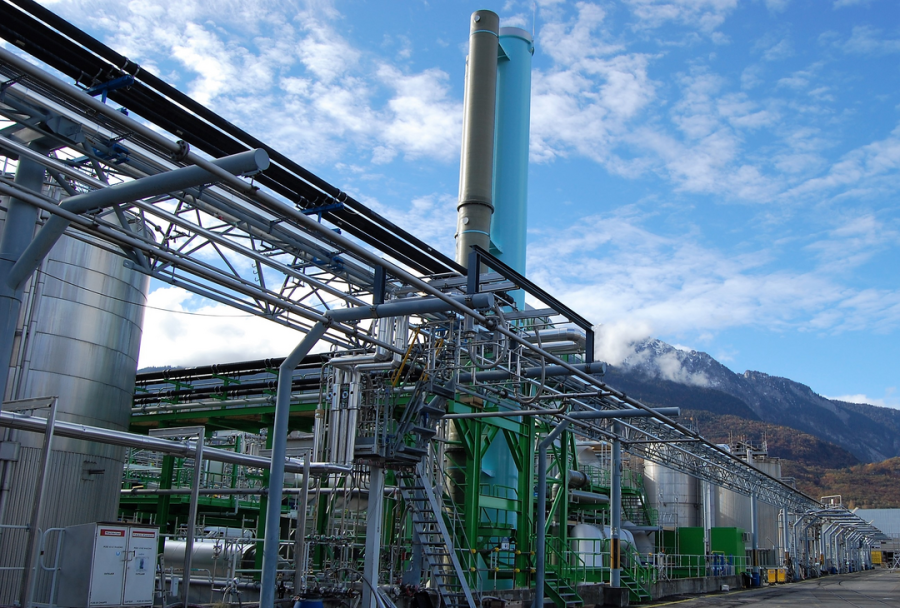
Innovation & Sustainability
Syngenta in Monthey: A sustainable future
The Monthey site brings together what characterises Syngenta in Switzerland: a rich industrial history, cutting-edge innovation for effective crop protection, and thoughtful investment in sustainable technologies that are a core element of the company's sustainability priorities.
05.09.2024

Situated on the mountain slopes of the canton of Valais, Monthey is Syngenta's largest production site for crop protection active ingredients worldwide and one of five of the company's research and production sites in Switzerland. Around 900 people work in Monthey, including 15 apprentices. The facilities are part of a large industrial park whose history goes back over 125 years.
Ideal situation for sustainable development
What began as a sugar factory in the late 19th century was able to develop here because all the necessary conditions for chemical production were available in Monthey: sufficient water from the Rhône, salt from the Bex mines for chlorine production, transport options via the railway link between Sion and St-Gingolph and, later, electricity from the Monthey hydroelectric power plant.
The special thing about Syngenta in Monthey is that, in addition to the production of active ingredients, the site is also responsible for transferring new active ingredients from research to production before this is extended to other sites around the world. These activities are made possible and supported by significant investments in the sustainability of production, as the following initiatives show.
Ambitious 10-year decarbonisation plan
"Syngenta Monthey has set out an ambitious 10-year plan to reduce CO2 emissions at the site and is on track to achieve this goal by 2030," says Alexandra Brand, Executive Vice President Sustainability and Corporate Affairs at Syngenta Group (left). A centrepiece of the plan is the "Ecotube" project. This consists of the construction of around 3 kilometres of pipelines between the thermal recycling company Satom SA and the production site in Monthey.
The demineralised water is sent to Satom SA, which converts it into steam by incinerating waste. This steam is fed back into the production processes in Monthey. This halves CO2 emissions and saves around 45,000 tonnes of CO2 per year. In addition, the Monthey site has been utilising hydropower from the River Vièze for energy production since 1910, which today supplies a third of the power plant's electrical energy.

Significant investments in waste recycling
"Syngenta has made significant investments in waste recycling in recent years," says Petra Laux, Chief Sustainability Officer at Syngent Group (right). "In line with industrial ecology, certain substances contained in the waste can be recycled at the site and returned to the production cycle." For example, Syngenta Monthey recycles around 89 per cent of the solvents used in chemical production and returns them to the manufacturing process. As described above, the heat released during waste treatment is recovered in the form of steam and fed back into the supply network.
The first part of the "Stratopair" plant (see image below) was put into operation in 2021 - the construction of this central waste gas incineration plant is scheduled for completion in 2024. Syngenta's production buildings will then be gradually connected to this plant and the waste gases will no longer be treated individually, as is still the case in some cases today. A special feature here is the use of RTO technology (Regenerative Thermal Oxidation): This uses the combustion energy of solvent vapours to maintain the combustion temperature and thus significantly reduce the use of natural gas. The first successes are already visible: in 2023, electricity consumption was reduced by 3 per cent and process vapour consumption by 8 per cent, while production remained the same as in the previous year.

Sustainable transport development
Another piece of good news for the sustainable future of the Monthey site is the construction of a multimodal terminal in the south of the town. This will not only relieve traffic congestion and make it safer, but will also offer new development opportunities for the industrial park and the entire region.
|
Syngenta's sustainability priorities Industrial production is a major contributor to global greenhouse gas emissions. Switching to renewable energy sources, decarbonising and reducing the energy consumption and environmental impact of Syngenta's production facilities and supply chains is therefore a top priority for the company. Find out more in Syngenta's company-wide sustainability priorities. |
